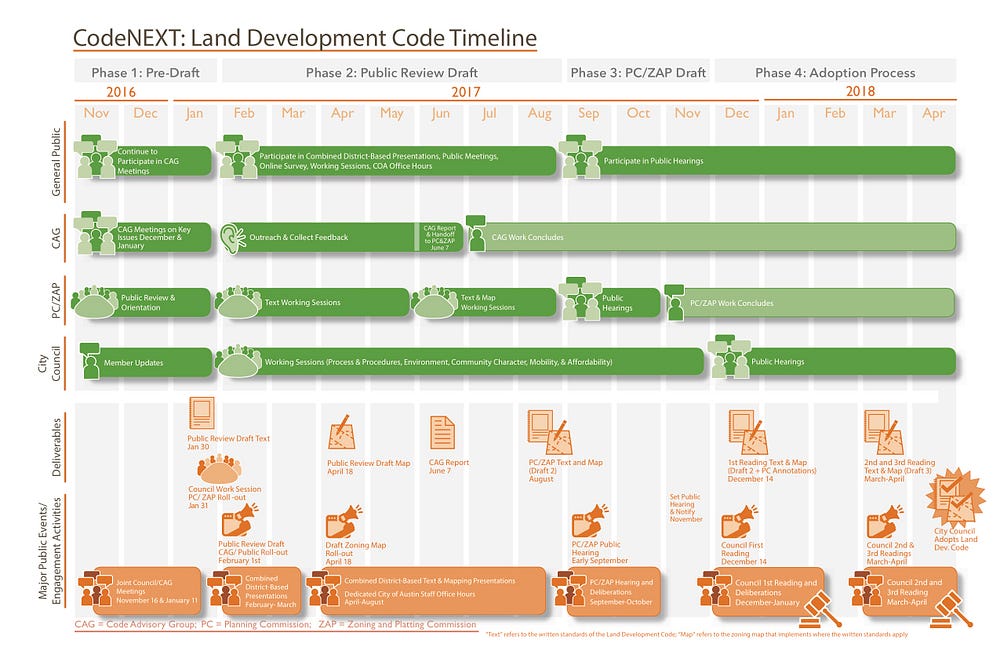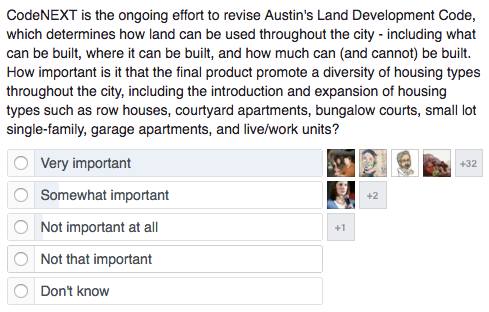CodeNEXT is Austin’s ongoing effort to revise the city’s Land Development Code, regulations that determine how land can be used throughout the city — including what can be built, where it can be built, and how much can (and cannot) be built. This is the city’s first comprehensive Development Code rewrite since 1984, when Austin’s population was approximately 40 percent of the size it is today.
While CodeNEXT might sound a tad dry, the results will shape our community for generations, so it is essential for Austin’s tech community to stay engaged and be an active participant in the process.
CodeNEXT’s origin
In 2012, the City of Austin adopted the Imagine Austin Comprehensive Plan, a 30-year plan for Austin’s future that envisioned a more affordable, mobile, and sustainable city. Imagine Austin saw the need for revisions to “Austin’s development regulations and processes to promote a compact and connected city.”
CodeNEXT was thus born and officially began in 2013. The past three years of work led to the release of the first draft of the revised code on January 31, 2017. In April, CodeNEXT will release a map that will show the new zoning districts across the city, and the City Council plans to adopt the final code in early- to mid-2018.

Why CodeNEXT matters to tech
CodeNEXT will impact the tech sector’s ability to recruit the world’s most talented individuals to Austin. Why? As Dan Keshet, an Austin tech data scientist, argues: “housing can be Austin’s killer app” when compared to other tech hubs across the country. After all, Silicon Valley’s housing woes are well known, and other areas like New York City, Chicago, and Seattle all face their own affordability crises.
Back to Dan Keshet:
For Austin and our platform of functional public policy, the Killer App can be walkable, bikable, transit-accessible, relatively affordable housing … There are few cities outside Silicon Valley that have the right ingredients of a startup economy as well established as Austin does. All of them have had housing cost problems for far longer than Austin has had, yet none of them have adequately addressed the issue.
With that in mind, CodeNEXT is the biggest and best public policy opportunity to ensure Austin can create enough housing units to meet rising demand.
Austin’s tech sector intuitively understands this. In a recent poll of the Austin Tech Alliance public Facebook group, the overwhelming response showed the final CodeNEXT product must promote a diversity of housing types throughout the city:

What can you do?
With the first draft of the Land Development Code already released to the public, future versions will be revised based on public feedback. If you want to get started, you can review the draft language and provide direct feedback via this online tool.
The CodeNEXT team is hosting a series of public meetings so attendees can get a better understanding from the code writers themselves. The next meeting will be this Saturday, February 25, from 1 to 3 pm at Lanier High School.
Also, save the date of March 22 at 5:30 pm, when Austin Tech Alliance will be cohosting a CodeNEXT education and engagement discussion with Mayor Steve Adler and tech leaders. Follow ATA on Twitter for more details on this event as they’re released.

